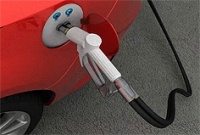Nanobeads could store liquid hydrogen to fuel cars
Plastic nanobeads that can store hydrogen at room temperature as a liquid are being commercialised for fuel applications by technology start-up Cella Energy.
It follows around five years of research into storable hydrogen fuels led by Prof Stephen Bennington at Rutherford Appleton Laboratory in Oxford and the London Centre for Nanotechnology at University College London.
One of the major stumbling blocks for hydrogen-powered vehicles is figuring out a way to carry enough hydrogen on board to travel even moderate distances between refuelling stops.

Currently, storing hydrogen requires either high-pressure cylinders at up to 700 times atmospheric pressure or super cooling to a liquid at -253oC.
Hydrides, which are powdered solids made up of hydrogen bonded to a more electropositive element or group, have been touted as one solution. In 2005 the US Department of Energy announced it would be investing $64m (£40.4m) to fund research into hydrides and other hydrogen storage technologies.
However, as Bennington pointed out, hydrides are not quite ready.
‘When you heat them up they take several hours for the hydrogen to come out — that’s obviously not ideal for fuel. Second, they’re either very sensitive to oxygen in the sense that they degrade very quickly in air, or they’re high flammable.’
Register now to continue reading
Thanks for visiting The Engineer. You’ve now reached your monthly limit of news stories. Register for free to unlock unlimited access to all of our news coverage, as well as premium content including opinion, in-depth features and special reports.
Benefits of registering
-
In-depth insights and coverage of key emerging trends
-
Unrestricted access to special reports throughout the year
-
Daily technology news delivered straight to your inbox










UK Enters ‘Golden Age of Nuclear’
Anybody know why it takes from 2025 to mid 2030's to build a factory-made SMR, by RR? Ten years... has there been no demonstrator either? Do RR...